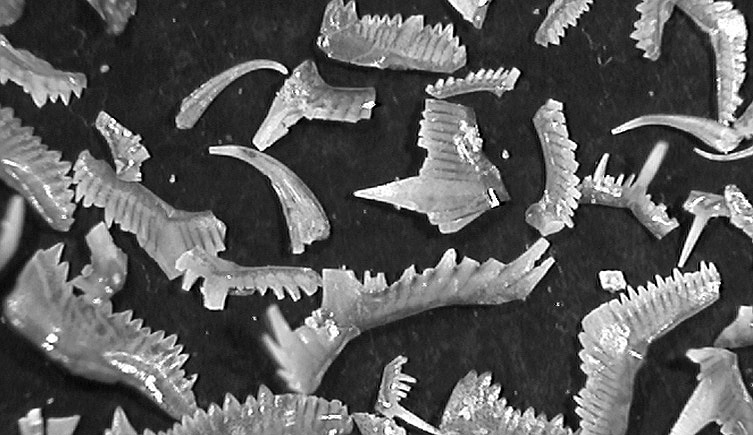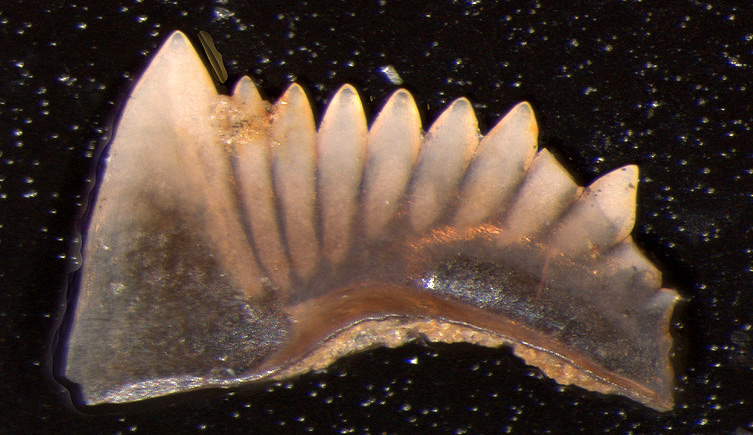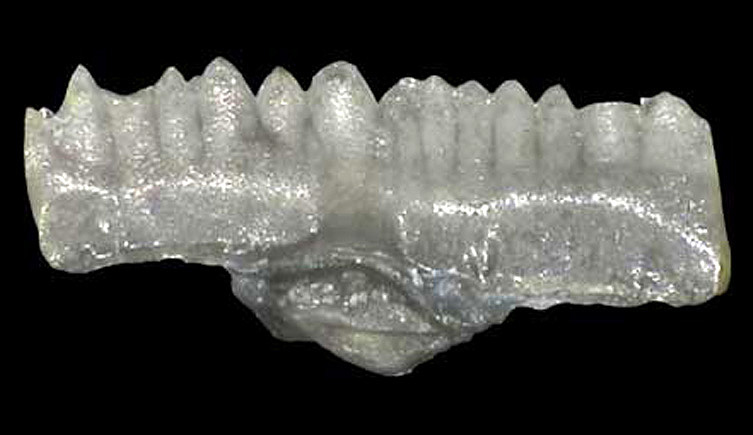
Conodont fossil, Ozarkodina confluens
The Museum’s collection of conodont microfossils is particularly strong in Carboniferous material.
5,000 50,000+
Slides Individual specimens
Strengths
The Museum curates a number of historically significant conodont collections:
- type and figured material of George Jennings Hinde (1879), which represents our oldest conodont collection
- material from Alan Higgins, published in the 1960s
- type and figured material from the Carboniferous of Britain (Frank Rhodes, Ronald Austin and Ed Druce, 1969), which forms the core of our conodont collection
- Austin’s British and Irish Carboniferous research collection, acquired in 1994
- Silurian collections from Richard Aldridge and co-workers, including Peep Männik, John Mabillard and Giles Miller
The Cambrian, Permian and Triassic periods are currently under-represented.
Looking for a specimen?
The condondont collection is being digitised
Any questions ?
If you would like to use any specimens for research
-

Microscopic tooth-like fossils from the Silurian period, found in the Timan-Pechora region of Russia
-

Microscopic Hindeodus cristulus fossils from the Carboniferous Middle Hosie Limestone near Pittenweem, Fife, Scotland
-

An element of the conodont Ozarkodina remscheiddensis eosteinhornensis
Countries of origin
The majority of the collection is British, but we hold smaller sub-collections from Australia, Belgium, Belize, Brazil, Canada, China, the Czech Republic, France, Iran, Italy, Latvia, New Zealand, Oman, Saudi Arabia, Sweden and Turkey.
Important historical collections
- George Jennings Hinde (1879)
- Alan Higgins (1960s)
- Frank Rhodes, Ronald Austin and Ed Druce (1969)
- Ronald Austin’s British and Irish Carboniferous research collection
- Silurian collections from Richard Aldridge and co-workers, including Peep Männik, John Mabillard and Giles Miller
Related links
- Conodont collection database
- Publications (link TBC)
- The Curator of Micropalaeontology's blog
- Blogpost: Conodonts – the most controversial microfossils?
- Follow us @NHM_Micropalaeo
- Micropalaeontology library

Collections on the move
Access to some collections will be affected as we prepare for the move to our new collections, science and digitisation centre.

Accessing the collections
Scientists and collections management specialists can visit the collections and borrow specimens for research.

Collections management
Our duty is to provide a safe and secure environment for all of our collections.